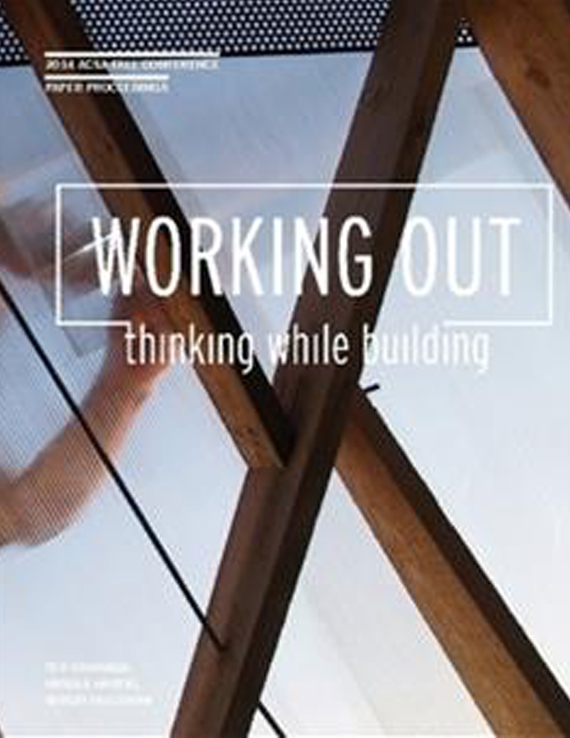Author(s): Georg Rafailidis
This paper documents first year student work which emerged from a syllabus based on “generative spatial processes”. The studio course introduced students to architectural space as a multifaceted entity. With each assignment, the investigative lens shifted to focus on the subject of space from a different perspective, to uncover a new distinct spatial dimension. This paper documents work which emerged from a four week long design-build assignment, which investigated space through the lens of structure and material behaviour.The design-build component was the final assignment in the semester and expanded upon earlier explorations of thin shell structures that were done in scale models. Students formed groups of seven and investigated the structural potential and performance of thin shell structures as a generative process at full scale. By working at 1:1, students were able to investigate the relationship between material behavior, structure and space/form. Structural logics generated form and space. Students were asked to cast a thin shell of an existing part of their actual, physical environment – their studio spaces – at 1:1 (e.g. corner, wall, niches, arch, I-beam, window, etc.). The existing space acted as form work. They then removed the shell and repositioned it (flipped, rotated, moved, etc.) to create a space where the entire team could be accommodated inside or underneath. The development of a clear strategy about how the cast volume was positioned in relation to the original (the real space) was emphasized. Space was created by the specific relation between cast shell and original building part. Students roamed their everyday studio spaces for forms which seemed to provide both a specific spatial experience and structural performance (certain forms obviously performed better structurally than others). Students had to think spatially and structurally at the same time. Thin shells acquire their structural strength through deformation of their surface. The less “flat” a surface is the more stiff it gets. This is a principle about which students developed understanding empirically.Each of the twelve student groups received one of the following six materials: hydrocal, twine, paper pulp, paper mache, latex and wax. Each material has its own specific properties, implied fabrication techniques and appearances. Students were able to compare their work with that of other groups and expand on the question about how materials influence form, structural behavior and space.The task to create such a large span with such weak material in such a short time frame forced students to focus solely on the relationship between structure, form and space and not get side-tracked by external concepts. The full-scale artifact offered a performative dimension (span, sag, failure, etc.) as well as an experiential dimension.This assignment allowed students to develop critical beginning design skills which were all anchored in their reading and response to an everyday space. The main focus of the studio was to avoid a common tendency in design studios – the simplistic dichotomy between the real and the represented. The original, represented, and performative aspects of materiality and space were dissected and reassembled into a new whole.
Volume Editors
Sergio Palleroni, Ted Cavanagh & Ursula Hartig
ISBN
978-0-935502-94-7

 Study Architecture
Study Architecture  ProPEL
ProPEL 
